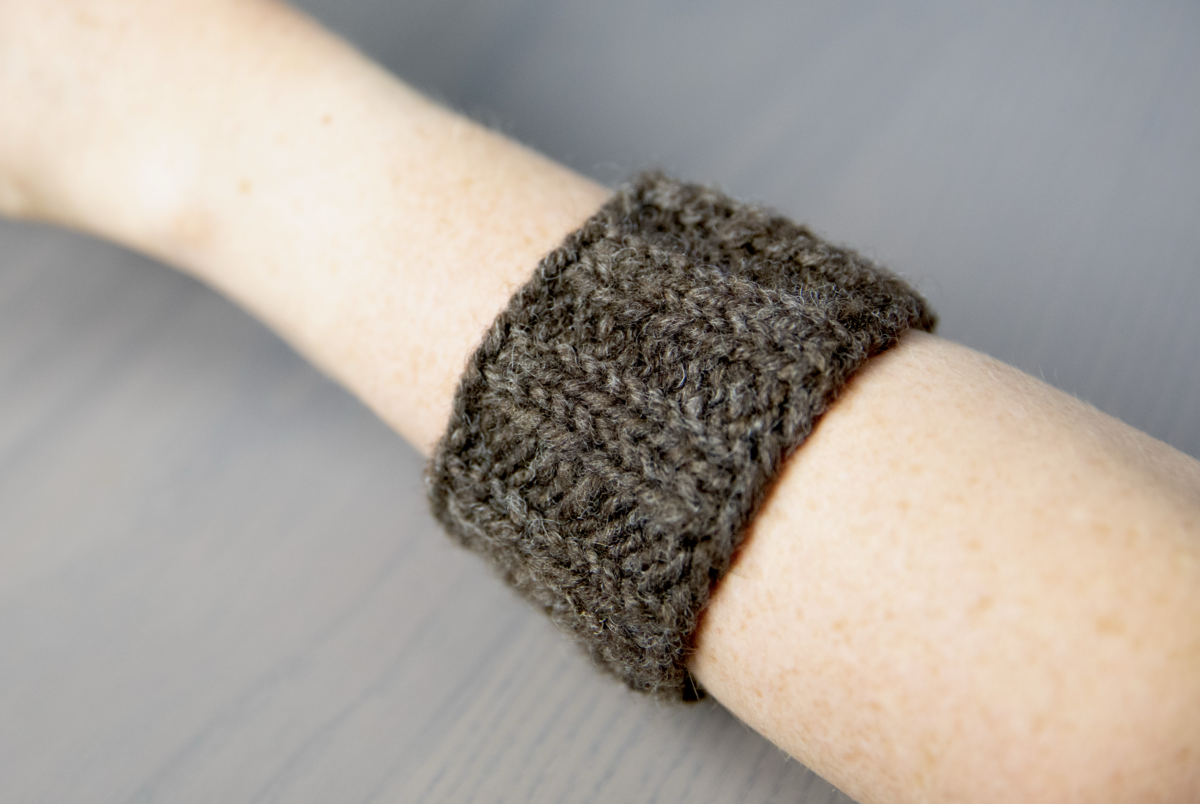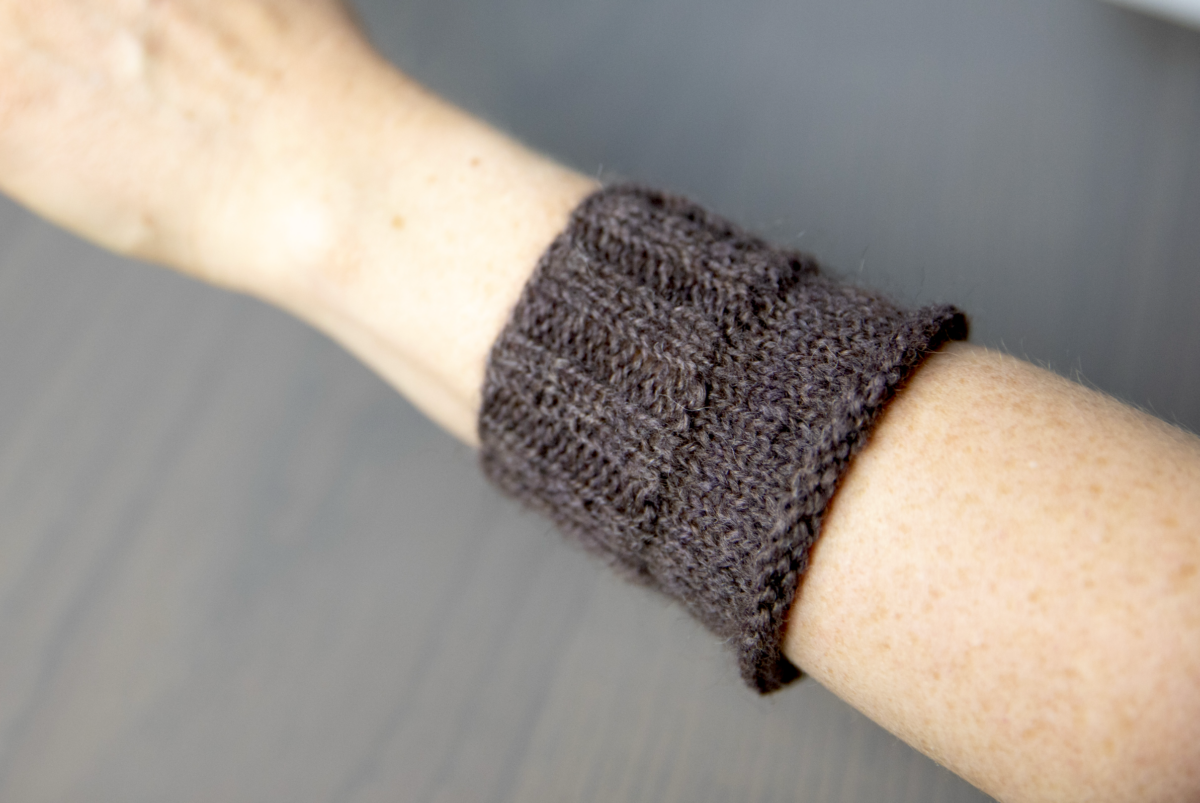Knit a Wrist Distaff to Test Your Handspun Yarn’s Durability
There is nothing quite as satisfying as using your own handspun yarn in a project. That feeling becomes even more meaningful when you’re making something substantial, like a sweater. Once you’ve spun your sample singles, hit your target grist, and knit a swatch of your fabric, it might feel like you’re ready to dive into spinning the rest of your yarn. And you might be! But before you go all in, here’s a helpful idea: consider knitting a wrist distaff.
At the School of SweetGeorgia, instructor Rachel Smith shares her expertise through courses focused on spinning for specific projects: hats, socks, and yes, sweaters. Her Spin to Knit a Sweater course walks you through how to sample spin before committing to hundreds of grams of fibre, so you can be confident you’ll achieve the yardage and yarn thickness (grist) needed to bring that dream sweater to life.
This video snippet from Rachel’s course, Spin to Knit a Sweater, where she shares the benefits of using a wrist distaff. Below, you’ll find her key takeaways, a link to join our newsletter to receive her wrist distaff pattern for free, more ways to find Rachel’s work through articles and courses, and ways to connect with the SweetGeorgia community.
What is a Wrist Distaff?
A wrist distaff is a small cuff worn around the wrist to hold fibre while spindle spinning. It serves the same purpose as the traditional distaffs that spinners used to tuck under their arms: it keeps your fibre contained, tidy, and away from your spindle. Wrist distaffs have seen a revival recently, likely thanks to the growing interest in handspinning.

Another Way to Use a Wrist Distaff
What makes the wrist distaff especially valuable is its ability to reveal how your yarn will hold up in daily wear. If you’re planning to knit a garment like a sweater, this is your chance to test your yarn on a smaller scale. Cuffs take a lot of wear; they get damp when we wash our hands, snag on zippers, and rub against everything. If your yarn is going to pill, stretch out, or lose its shape, the wrist distaff offers a glimpse of how it may behave in your finished sweater.
When knitting your wrist distaff, Rachel recommends using a needle one size smaller than what you plan to use in the final garment since sweater cuffs are usually knit with a firmer tension. And if a two- or three-inch sample doesn’t feel like enough, you can always extend it; knit an inch or two of stockinette after the cuff for a fuller picture of how the yarn will behave.
Rachel’s wrist distaff pattern is available to everyone in the SweetGeorgia community, not just School members. Sign up for our newsletter to receive your free copy, along with updates on new articles, tutorials, make-alongs, products, courses, and more. You won’t want to miss a thing.

More About Rachel Smith
- Rachel’s Instagram
- Welford Purls/Wool n’ Spinning
- Explore Rachel’s courses at the School of SweetGeorgia
- Browse Rachel’s articles to discover new techniques, refine your skills, and spark creativity.
Need More Help?
Do you have questions about wrist distaffs? If you’re an All-Access School of SweetGeorgia member, join us in our Community Forums! One of the great perks of being an All-Access member is the opportunity to ask Rachel Smith questions about their articles and courses and connect with fellow members.
Not yet a member of the School? We invite you to come and see what it is all about! Use the code: EXPLORETHESCHOOL to save 15% on an All-Access monthly membership!
We welcome you to join us in our SweetGeorgia Community. This is where we share projects that inspire, have fibre-filled conversations, host make-alongs, and participate in a variety of virtual meetings! We discuss all things knitting, crocheting, spinning, weaving, machine knitting, and more!
Together, we share, learn, and grow as a community. We would be happy to have you join us!
Original publication: October 13th, 2022; Refreshed: August 26th, 2025
The post Knit a Wrist Distaff to Test Your Handspun Yarn’s Durability appeared first on SweetGeorgia Yarns.
Comments
Post a Comment